
Vowels in Chinese and Chinese consonants pinyin don’t work exactly as you might expect when coming from English. In fact, technically they’re not even called vowels or consonants. The correct name for these pinyin terms is initials and finals. We’ll be going over exactly what that means and why the difference matters below. So read on to master Chinese vowels and consonants pronunciation! This is the second chapter in Chinese Pronunciation Mastery
Contents
Chinese Vowels
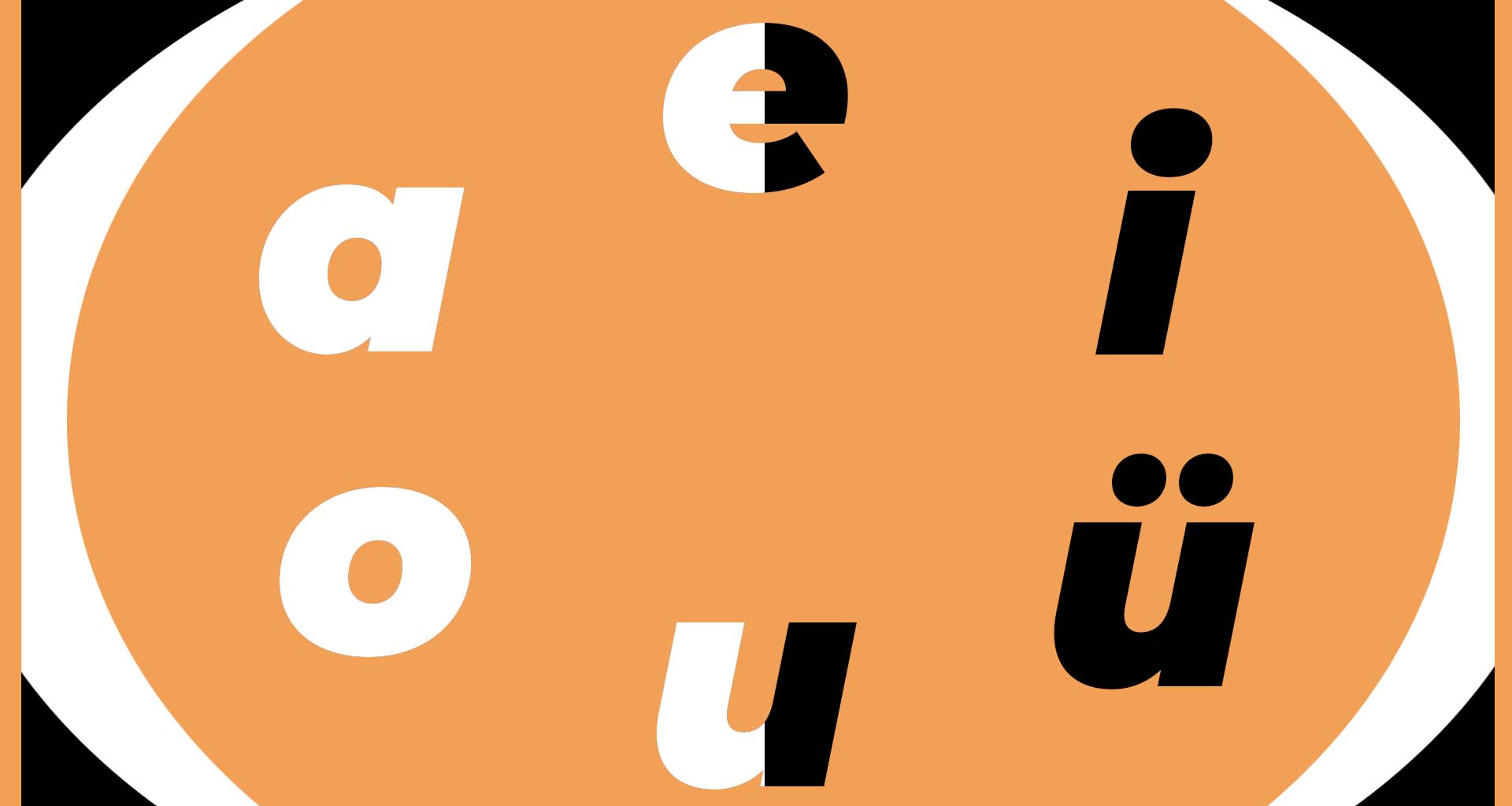
On the face of it, vowels in Chinese differ only slightly from English. There is the usual ‘a, e, i, o, u’ and the (sometimes dreaded) ‘ü’. ü is nothing to be scared of. First we’ll go over how to pronounce Chinese vowels pinyin and then we’ll move on to how using them differs from English.
How To Pronounce Chinese Vowels
A lot of the information below features in the second lesson in our Chinese pronunciation YouTube series. As well as the video, you can use this to consolidate and revise your new knowledge.
The core Chinese vowels we mentioned above can be separated into two groups. The first group is ‘a, o and e’: 开口呼 (kāi kǒu hū)
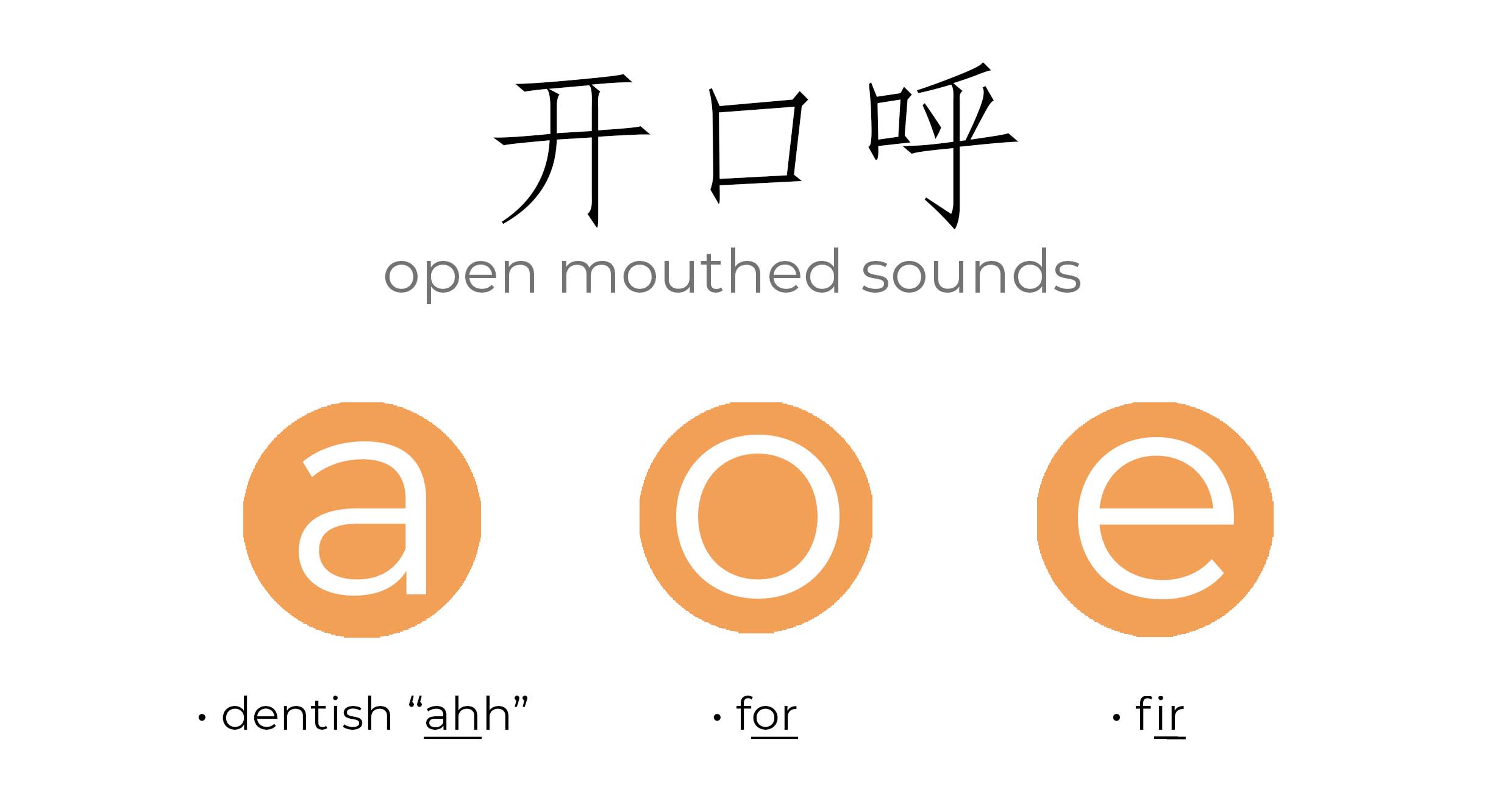
These are open-mouthed sounds that you exhale from your mouth. Each letter has a similar sound in English. So when learning Chinese vowels pronunciation, we’ll start there. You can use the audio playback to hone in on the subtle differences in sound.
You can click playback to hear the pinyin sound spoken by Ella
a
o
e
So that’s the first half of the single lettered Chinese Vowels. Awesome. The other half of the single lettered Chinese vowels, i u and ü belong to their own categories, but they are interrelated. Notice how I’m using the words "single letter". This is because there are more complex double vowel sounds in Chinese called diphthongs. Essentially these are a combination of two sounds. More on those in the next chapter. We’ll start with the Chinese vowels ‘i and u’.

"i" sounds nothing at all like its English counterpart. "u" is a subtly different to English. It’s similar to an "oo" sound. Listen to the audio to see how it differs.
You can click playback to hear the pinyin sound spoken by Ella
i
u
The Dreaded ü
I’ve met Chinese language learners who have been studying for 5+ years and still struggle with ü. If you remember these pointers, you’ll never have trouble.
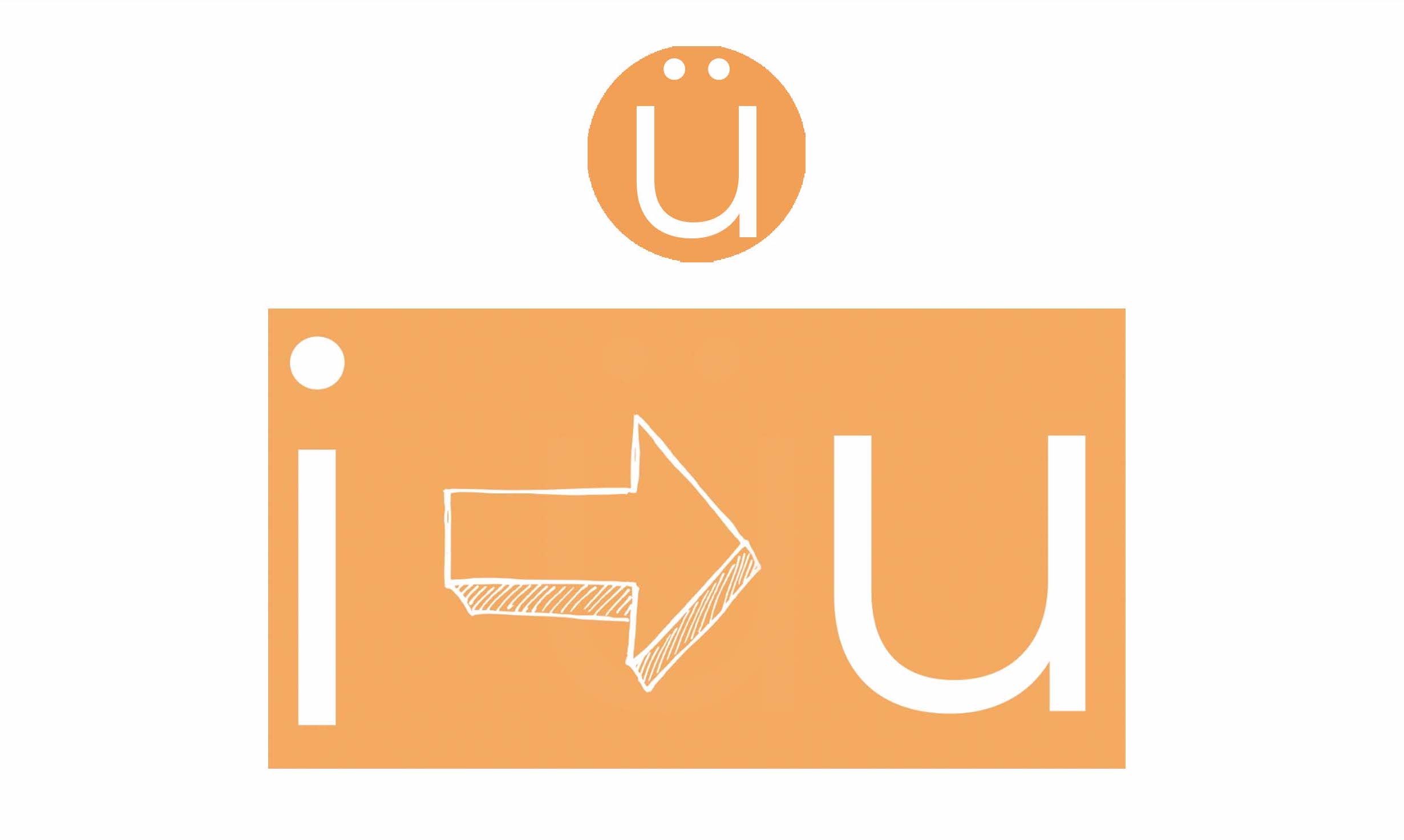
You can try this as you’re reading: start with the "ee" sound of the Chinese vowel "i". Now as you’re saying "ee", round your mouth. It will naturally form the ü sound.
You can click playback to hear the pinyin sound spoken by Ella
ü
Once you’ve got this practised, a quicker route to the sound is to form your lips as if you were about to whistle. Now, instead of whistling, say "oo". It’s very similar to "u". As you’d expect from the shape of the letter. Though your lips should be round like in "u", they are tighter and smaller for "ü". Don’t forget! You can to help improve your pronunciation.
Finals in Mandarin
So far we have only come across simple finals (also called single vowels). That is, the single letter finals: a, e, i, o, u, ü. Finals can start or end a syllable in Chinese. Just as in English, in Chinese you can combine single vowels to form another double vowel sound. For example, the "oo" in "food". In mandarin you can combine the simple finals in interesting ways. These combinations are also called finals in mandarin. So finals can be comprised of one or two vowel sounds and they can appear at the start or the end of a syllable. For now, focus on distinguishing and recognising the single vowel finals we talked about above. They are the foundation of Chinese pronunciation for beginners.
Chinese Consonants

We’re now on the home run. The easiest Chinese letters to pronounce are the following Chinese consonants. Lets start with 双唇音 (shuāng chún yīn), sounds that come from having your two lips together.
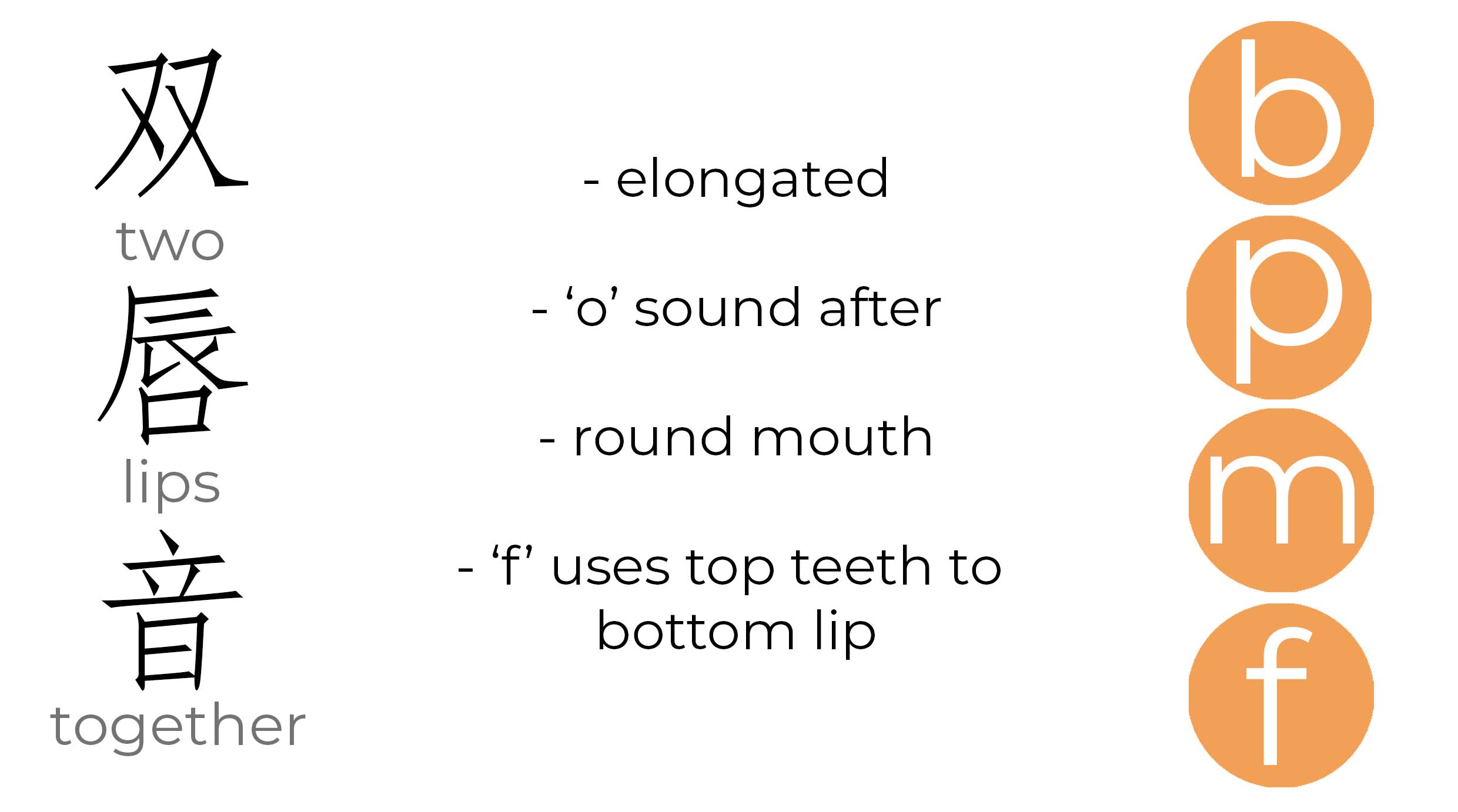
Here, compared to English, the sound is more elongated. There is an ‘o’ sound after the letter and your mouth should be quite rounded. ‘f’ is special in that the shape your mouth makes is unique when you pronounce it: your top teeth touch your bottom lip. It shares similarities with the previous three: elongation, round mouth and ‘o’ sound.
You can click playback to hear the pinyin sound spoken by Ella
b
p
m
f
The next group, 舌尖中音 (shé jiān zhōng yīn) are formed by keeping the tip of your tongue in the middle of your mouth.
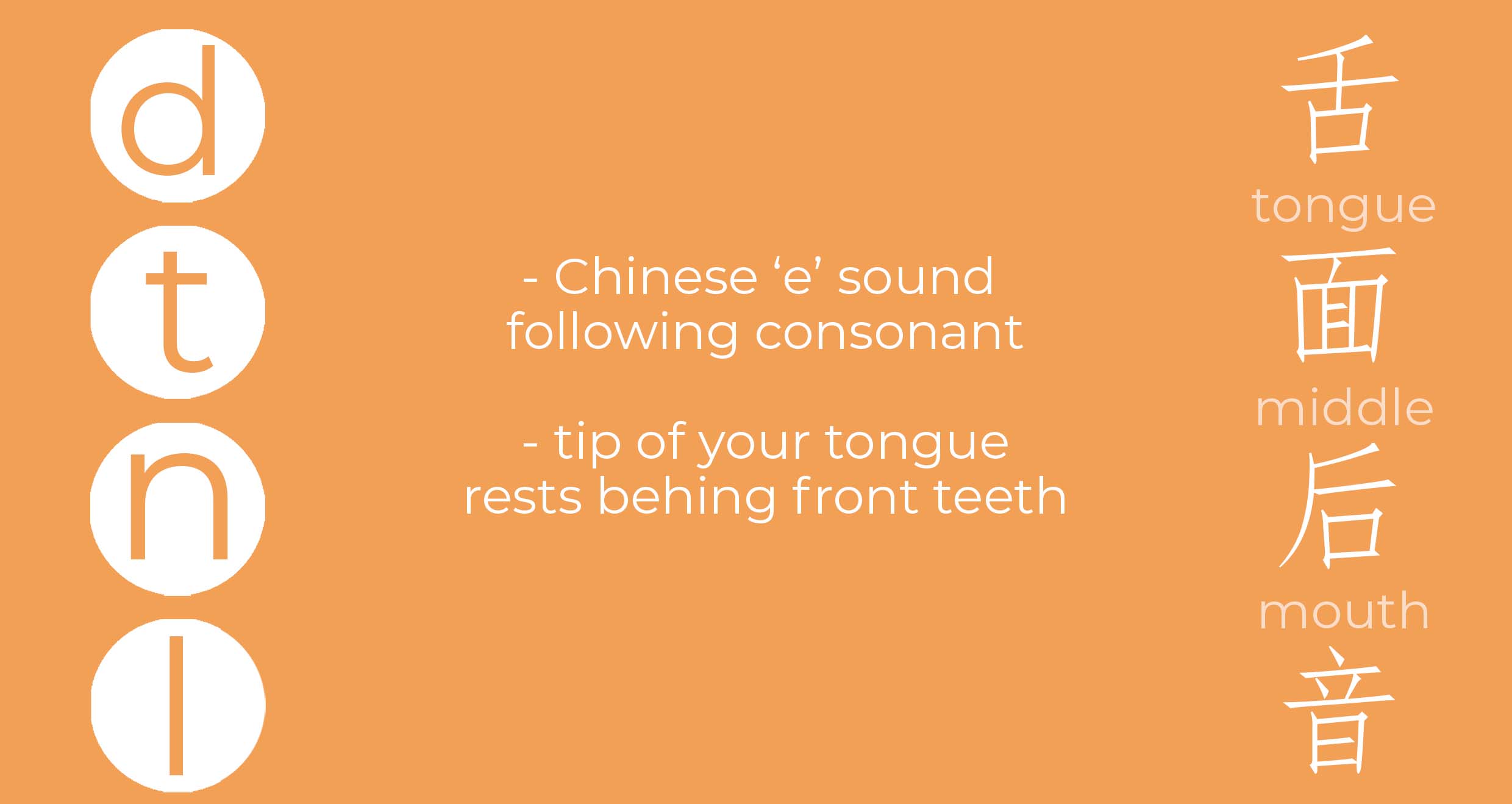
Each have a Chinese ‘e’ sound following the consonant. The tip of your tongue rests behind your front teeth.
You can click playback to hear the pinyin sound spoken by Ella
d
t
n
l
For g, k and h - 舌面后音 (shé miàn hòu yīn) - your tongue is towards the back of your mouth.
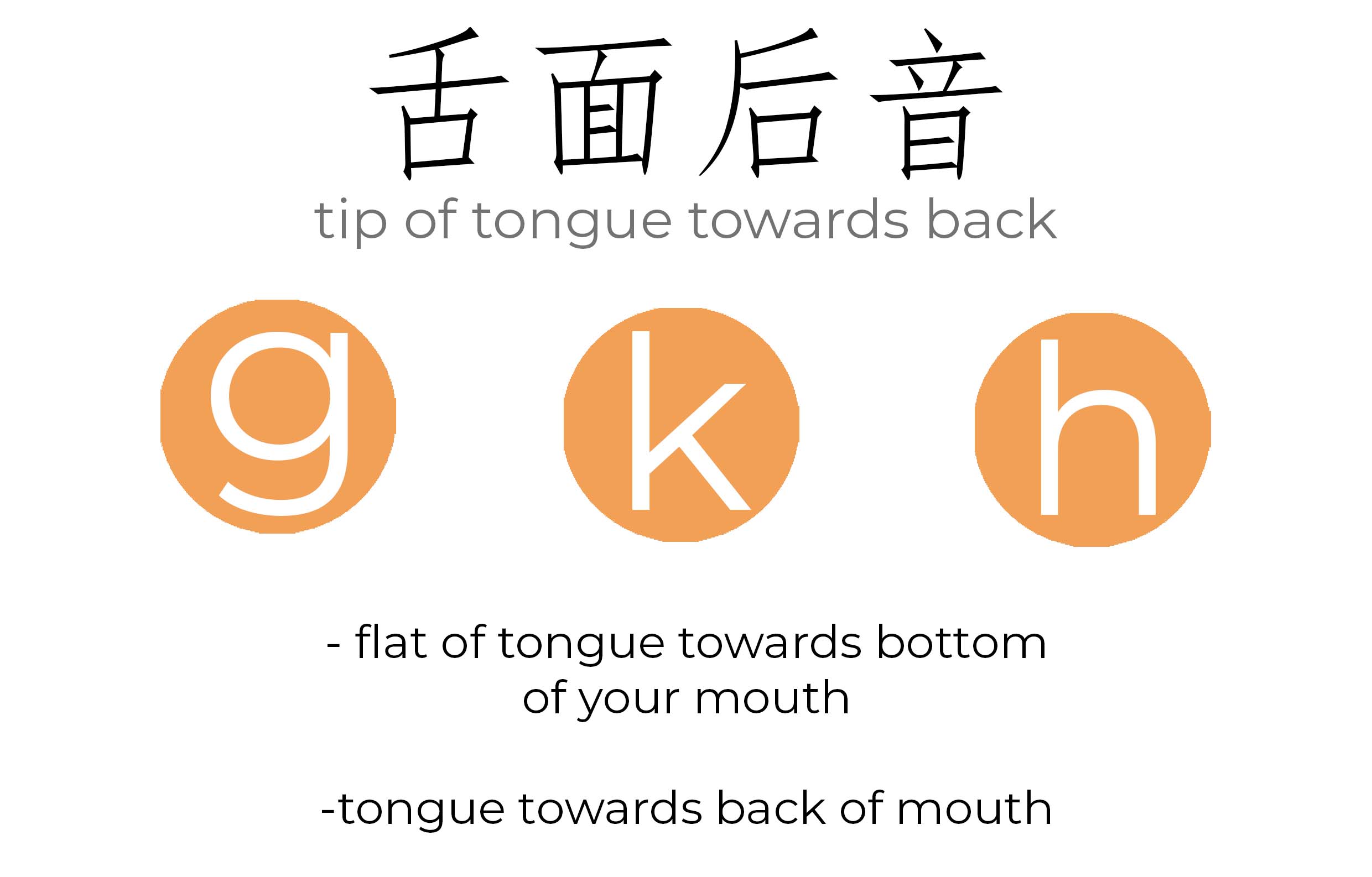
Compared to English your tongue should be flatter in your mouth and lay towards the bottom.
You can click playback to hear the pinyin sound spoken by Ella
g
k
h
The final two Chinese consonants for us to look at are ‘w and y’. These are a little bit special. These letters are only found at the start of a syllable (as an initial) and they modify the syllable in different ways.

‘y' is actually the pinyin ‘I’. ‘w’ is actually the pinyin ‘u’. So the word ian, would be spelt yan. The word uan is spelt wan. Try pronouncing ia (ee-a) and ua (oo-a) and you’ll see how similar the sounds are to ‘w and y’. In words that only contain contain one vowel and it is "u" or "I" (like yī or wǒ.). The "y" or "w" is added to the front instead of used to replace the vowel. Don’t worry too much about soaking all these rules up right now, they’ll make more sense the more you see the letters.
Want exclusive study materials and a chance to practise your Chinese with a native speaker, Ella? Click the "Become a Patreon" button to find out more.
Another feature of these two Chinese consonants is that they divide the pronunciation of certain syllables. When ‘y’ is followed by a ‘u’. E.g. in the word "yuan", the ‘y’ is not pronounced as a ‘u’, it is ignored completely. Instead, it is an indicator here that ‘yu’ and ‘an’ are to be pronounced separately. I.e. divided. As mentioned above, you will pick up these pronunciation tricks naturally as you familiarise yourself with more Chinese. So don’t stress too much about remembering these rules here. Simply seeing them now will help you recognise it when pronouncing in the future.
Initials and Finals in Chinese
We learnt above that finals in mandarin can be found at the start or the end of a word. Initials on the other hand, can only be found at the start. Chinese vowels and consonants will usually appear together as a syllable using both initials and finals. Let’s look at the sentence "I love you" in Chinese. Wǒ aì nǐ!
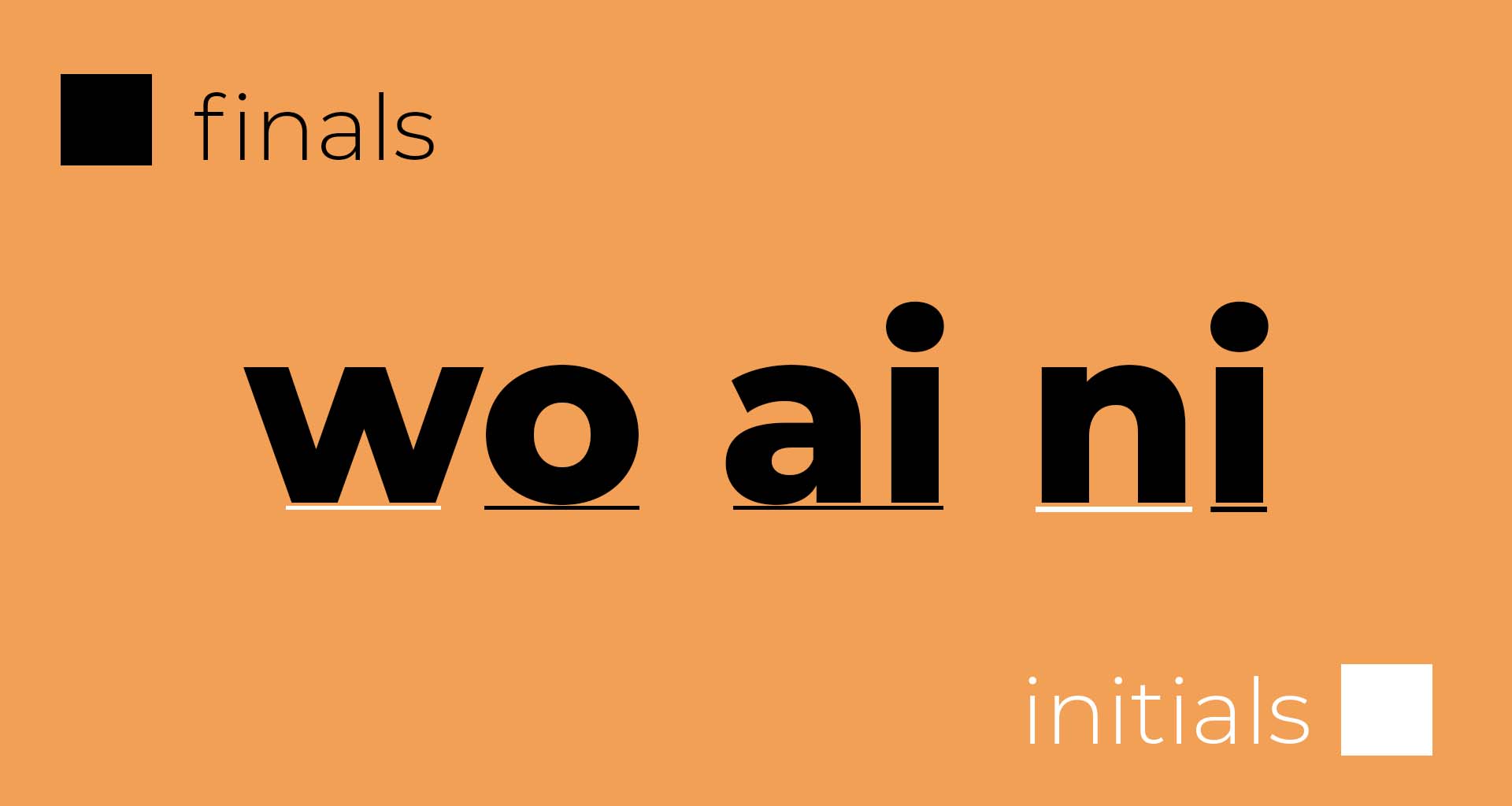
Wǒ, meaning "I" (pronounced uǎ if we remember the rules above) is comprised of both initials and finals. As is nǐ (you). Aì on the other hand, the Chinese word for love, uses only a final. This final is a double vowel. Learning how each of the single letter finals and initials join together is the next step on our initials and finals pronunciation journey. Join us next week when we’ll be learning about useful sounds like "iang, ai and uen". Until then, come and say hi to us on YouTube! Bye for now! PREVIOUS CHAPTER: What is Pinyin? Coming soon: - The other syllables that make up pinyin - How To Pronounce Pinyin Tones
